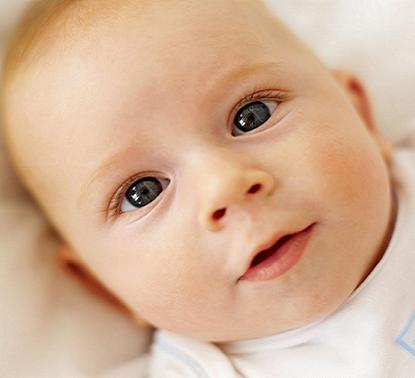Imagine seeing the world through an infant's eyes. How do they navigate(导航) their new surroundings? Researchers at New York University led by Karen Adolph may have discovered a way to find out.
"Our project is about natural vision and how it develops, so there's tons of research about vision in sort of artificial(人造的) situations but surprisingly after more than a hundred years of study, researchers know almost nothing about where people look and why in everyday life."
Finn, an 8.5-month-old toddler(小孩), who recently participated in this project, she has been coaxed(哄骗) to wear the eye-tracking headgear(头饰,帽子), which consists of two cameras - one that's looking out on the scene to get the baby's perspective(视角), and another that's looking at the eye to track the movement of the pupil(瞳孔). A computer analyzes both camera views to determine exactly where Finn is looking. The headgear weighs just 45.4 grams.
Jason Babcock is the founder of Positive Science, a New York company that has developed eye-tracking devices over the last decade. He worked to make the eye-tracking hardware(器件) smaller and lighter so that it would be possible to use with infants.
"Now with the cameras and sensors being so small you can get images that are the size of your pinky(小指). With cell phones and different things, we can combine technologies that we never thought we could do."
The team's method is the first to look at infants' vision when they are free to walk around and play however they want. What these researchers have discovered using the new technique came as a surprise. John Franchak is the lead researcher on the project.
"We expected going into the study that infants would be looking at their mothers constantly because that was common knowledge within social cognition with infants."
But in a room full of toys scattered(分散) everywhere and obstacles to climb on and crawl on, the infants only looked toward their mothers about half the time. And even if they did look at their mothers, they looked at their mothers' faces only about 15 percent of the time.
"If infants aren't looking at their mothers as much as we thought, then that changes the way we might think about how infants learn about the world from other people."
In contrast to rarely looking at their mothers' faces, toddlers almost always look directly at the object when reaching for it.
Another interesting finding was that while infants look directly at an obstacle before walking onto or over it, 75 percent of the time they don't always have to. Toddlers are able to use information from their peripheral vision(周围视觉) and still walk very well. While the scientists are still trying to develop methods to do more basic research, they say this technology may eventually be used in a wide range of applications.
"Down the line we would hope that there would be more research applications that could help infants with developmental disorders, and help medical research and applied research(应用研究), too.”
These researchers have only scratched(抓挠) the surface in studying how young children navigate the world. They say future studies might guide doctors in how they help children with motor disabilities(运动型残疾) and autism(孤独症).


